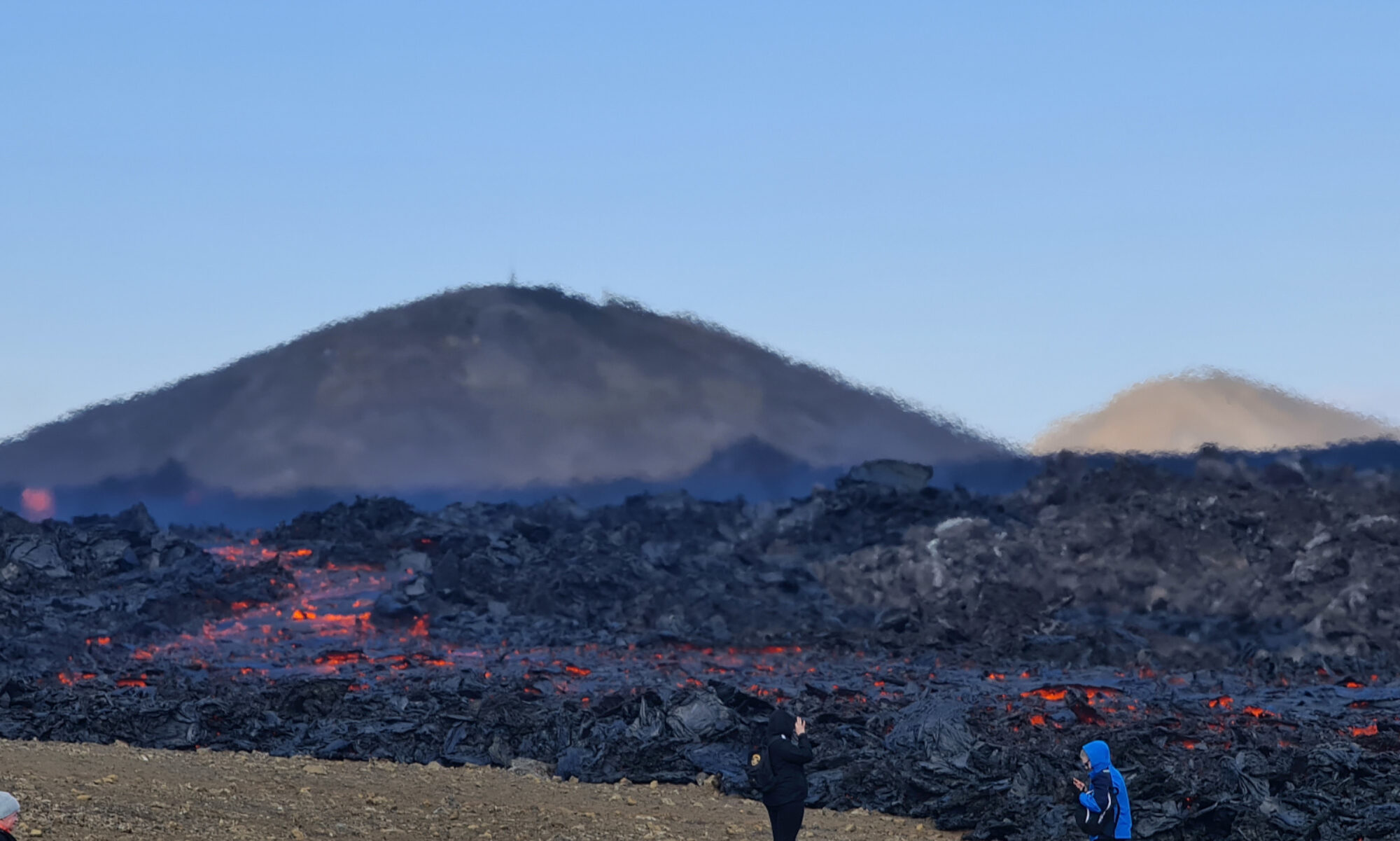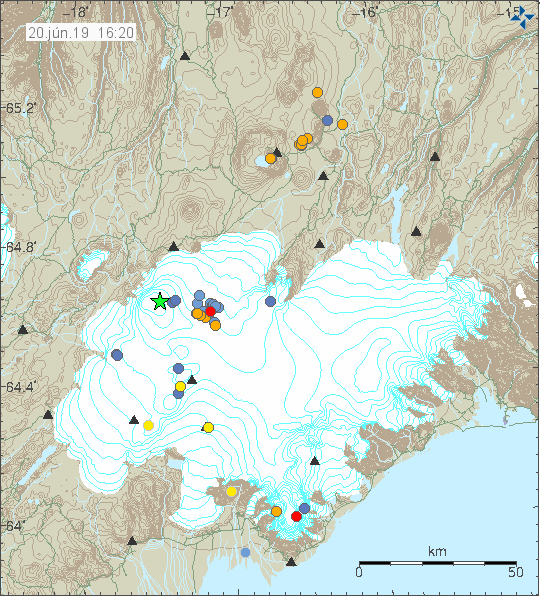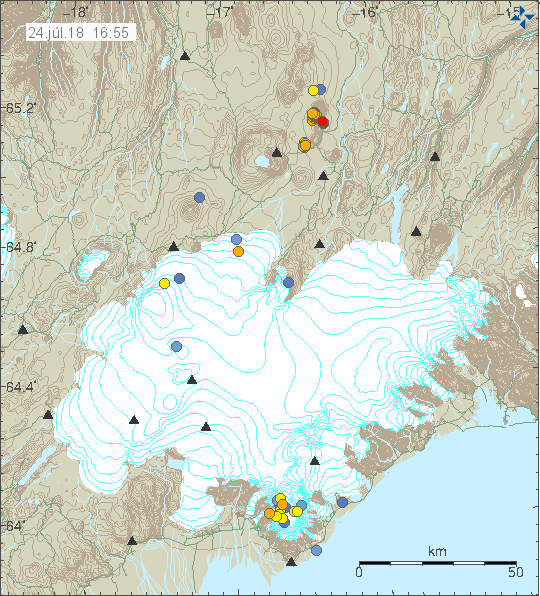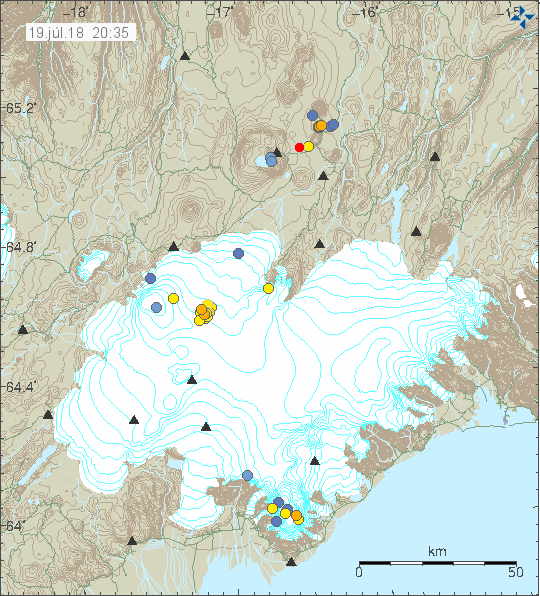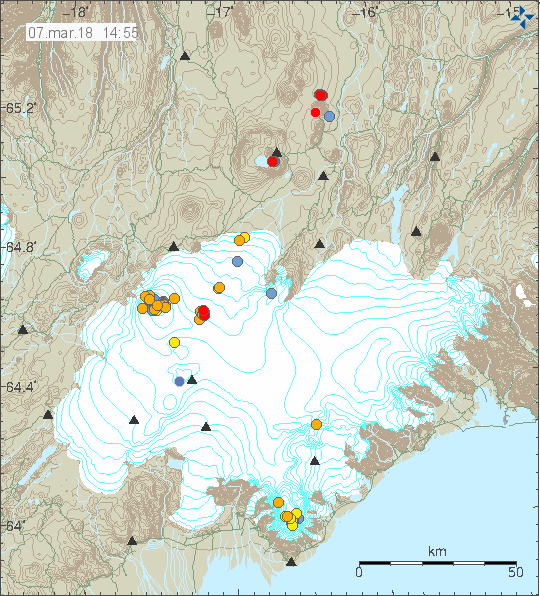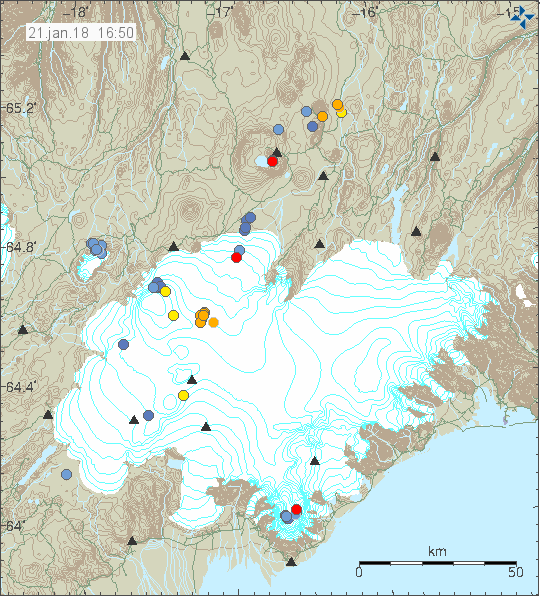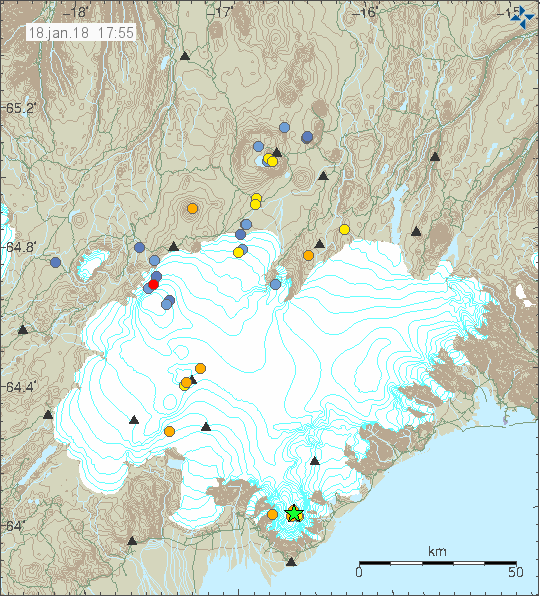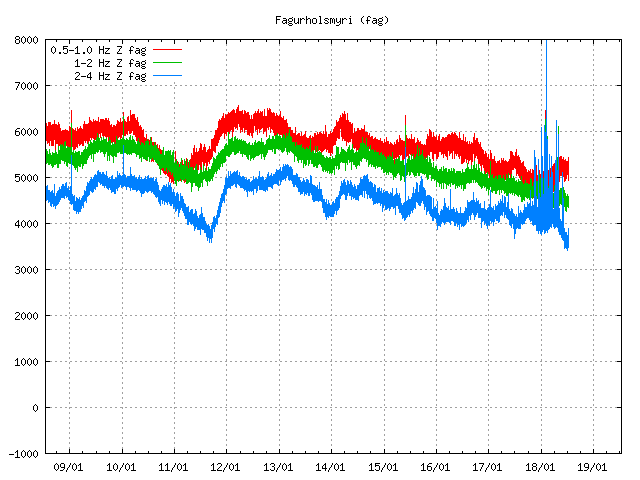Today (13-October-2019) a minor earthquake swarm took place in Tungnafellsjökull volcano. After the eruption in Bárðarbunga volcano there has been a ongoing earthquake activity in Tungnafellsjökull volcano, why that it is remains unexplained. There are suggestion in recorded data that magma is moving inside the volcano at slow rate but that remains unclear for now.
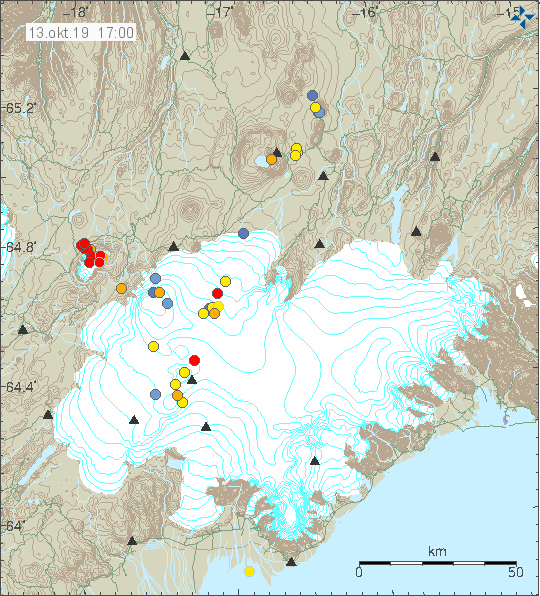
The earthquake activity in Tungnafellsjökull volcano (red dots north of Bárðarbunga volcano). Copyright of this image belongs to Icelandic Met Office.
Tungnafellsjökull volcano has no known eruption history in last 12000 years so its impossible to know what signs if any appears before an eruption happens. Currently there are no clear signs that Tungnafellsjökull volcano is preparing for an eruption. This might just be after-effect of the eruption in Bárðarbunga volcano that placed a lot of crustal strain on Tungafellsjökull volcano and resulted in a lot of earthquake activity in that volcano during the early start of that eruption in Bárðarbunga volcano.
Donations
Currently there is only need for about 37.259 ISK (263€/$292USD) until I have all the money needed for paying for moving of my belongings and to get them delivered to me on time without having to pay a lot of storage charges (if any). Unfortunately I have to use tiny amount of this money to pay for transport and little food costs in Iceland and Denmark. I am going to keep that amount to absolute minimal amount. Thanks for the support. 🙂
